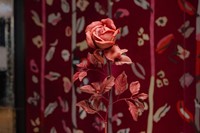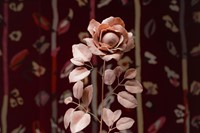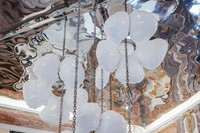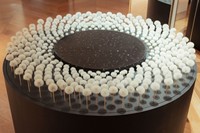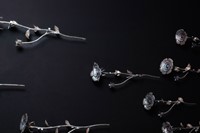Les Fleurs du Mal at Maison Guerlain in Paris pays tribute to flowers, and the sacred place they have come to occupy in art
Sex, death, abortion, innocence, politics, gender – flowers in art are rarely just flowers. What for some artists is a symbol of pastoral innocence or the divine is turned by others into sensual representations of eroticism. It is no surprise that artists like Robert Mapplethorpe and Nobuyoshi Araki, known for their highly sexualised images of the human body, also photographed flowers. Under their lens, the obscenity of the folds of the petals, the stamens, the glistening of nectar, are made explicit.
In his 1857 collection of poems Les Fleurs du Mal [The Flowers of Evil], Charles Baudelaire asks some of the most fundamental questions that we have as humans; exploring love and passion, decadence and debauchery, death, nature, original sin and our relationship to suffering. It is for Baudelaire that a new exhibition at Maison Guerlain in Paris, Les Fleurs du Mal, is named.
Guerlain have long been patrons of contemporary art, dating back to the beginnings of the house when, in 1853, Pierre-François-Pascal Guerlain became perfumer to Their Majesties of France with the creation of Eau de Cologne Impériale as a gift for the Empress. 170 years later, the house is celebrating with a collection of artworks, ranging from paintings to sculptures to photography, that pay homage to the world of flowers. Brought together by curator Hervé Mikaeloff, the exhibition comprises 26 artists who all use the language and imagery of flowers to convey their messages to the world.
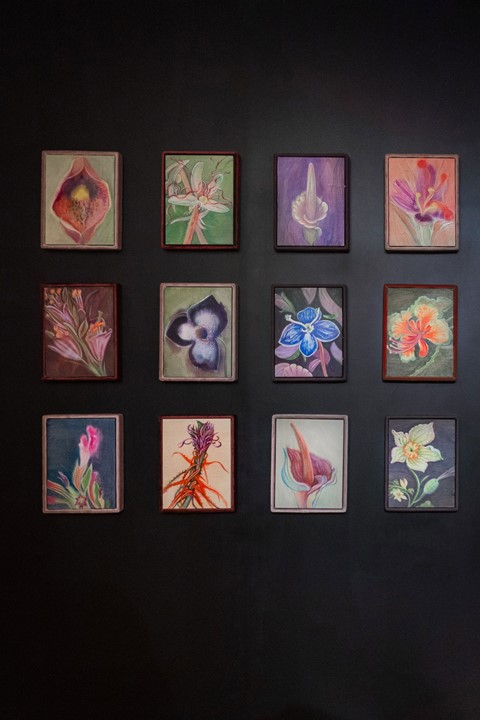
Alongside Mapplethorpe and Araki, the erotic possibility of flowers is explored in artworks like Rose Labia by Roni Landa, a fleshy sculpture where the petals of a flower become the folds of a vulva. Feminine Ecstasies – Margherite Porete by Anselm Kiefer juxtaposes a climactic face of a woman with rosy petals, while Mimosa Echard makes the connection even more explicit in her work Bisoufleur in which a tongue is plunged deep into the inner folds of an orchid.
Alina Bliumis turns the sexual political with her work Plant Parenthood. Here, once again, flowers are sexualised, their external sexual organs exaggerated and highlighted. But there is a catch: the flowers depicted are all ones which have been used throughout history to induce abortions, turning the piece into a statement on the right to bodily autonomy and legal reproductive healthcare.

Moroccan artist Ghizlane Sahli also explores the intimacies of women’s bodies in her work Sed non satiata. Working closely with female embroiderers in her home country and across Africa, Sahli creates art which brings together plastic waste – on this occasion bottles, tubes and CDs – with silk and gold thread. “In my work I promote freedom, I like to celebrate women’s bodies,” she says. “[This piece] talks about the link between women’s bodies and the sea. I like the confrontation between these very noble materials and the waste together.”
Meanwhile, Joël Andrianomearisoa’s tribute to the rose of Marrakech, Hymne À La Rose, is a multi-sensory installation comprising 42 sculpted metal roses which cover the walls in a dark room. “It is about the idea of the rose dramatically, the rose that you can offer to someone. It is something dramatic but so beautiful, romantic and also very tragic. So there is a duality to me on this flower,” he says. Playing in the background of the room is a text he wrote and which is sung, in several languages, by French-Moroccan singer Hindi Zahra, while the Guerlain fragrance, Épices Volées [Stolen Spices], fills the space.
For a closer look at some of the artworks on display in the exhibition visit the gallery above.
Les Fleurs du Mal is running at Maison Guerlain, Paris, until November 13, 2023.

